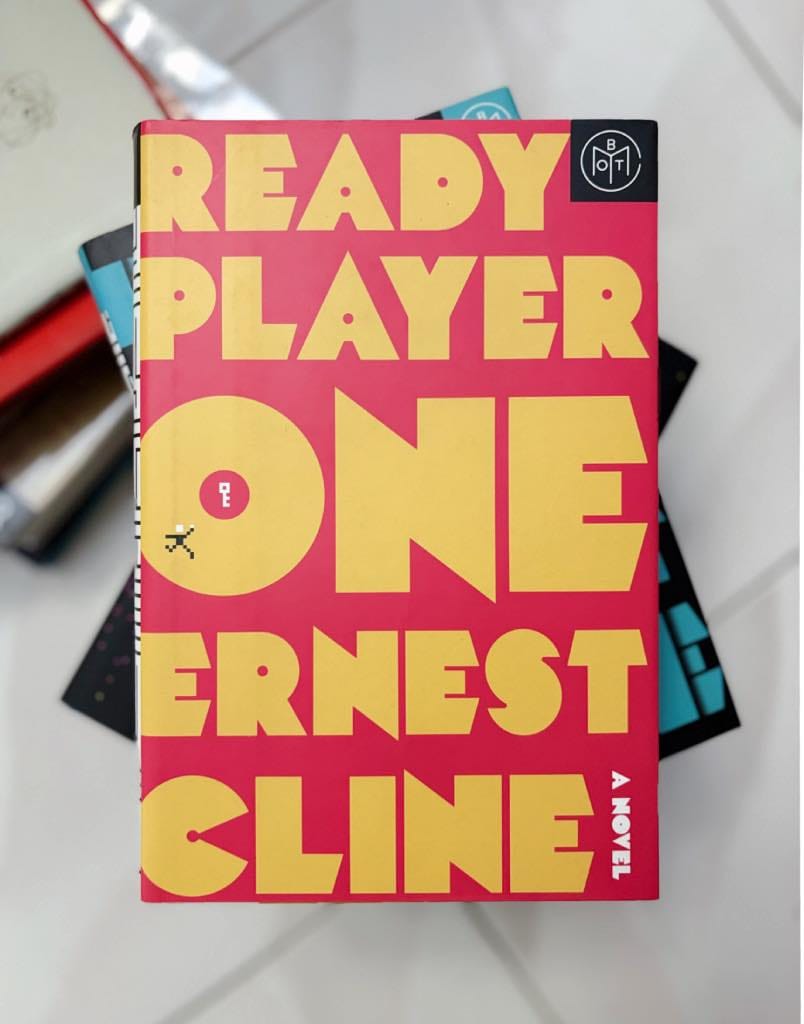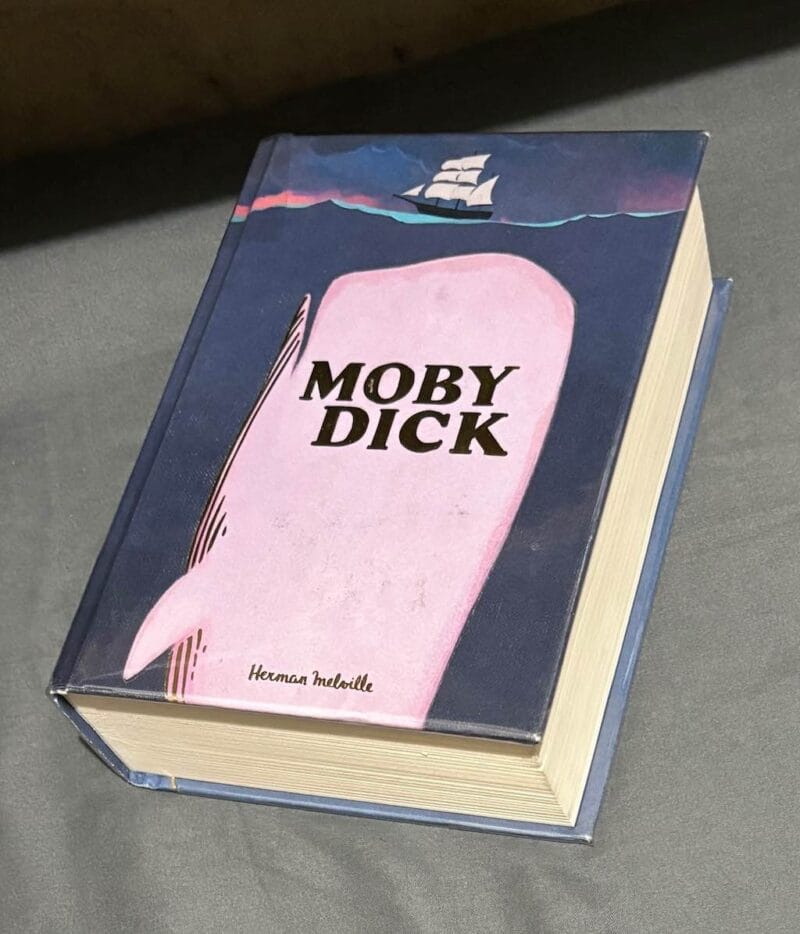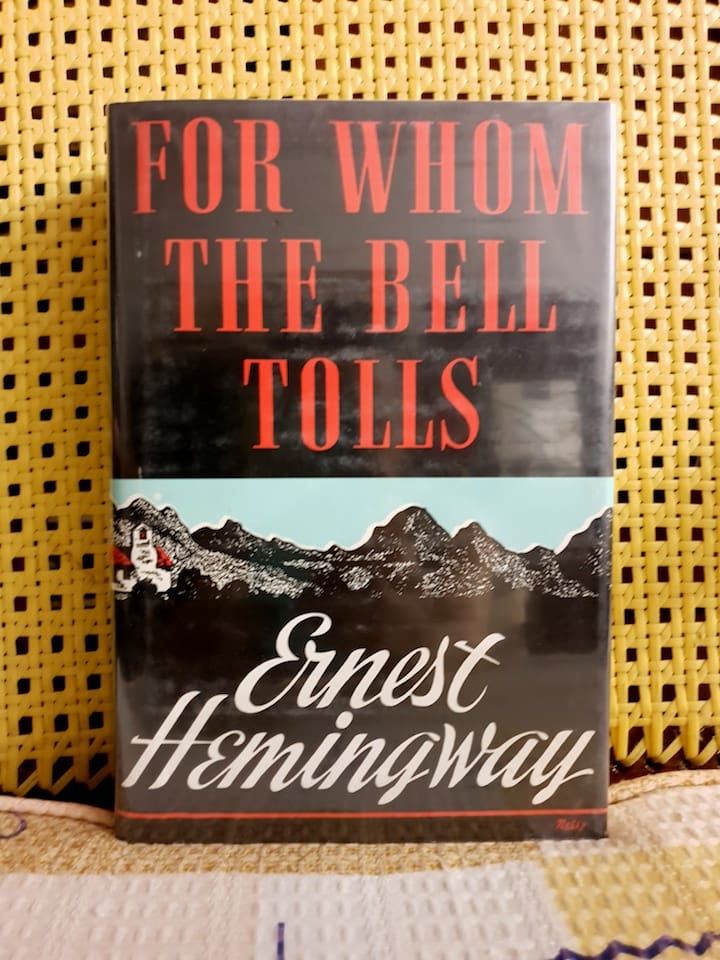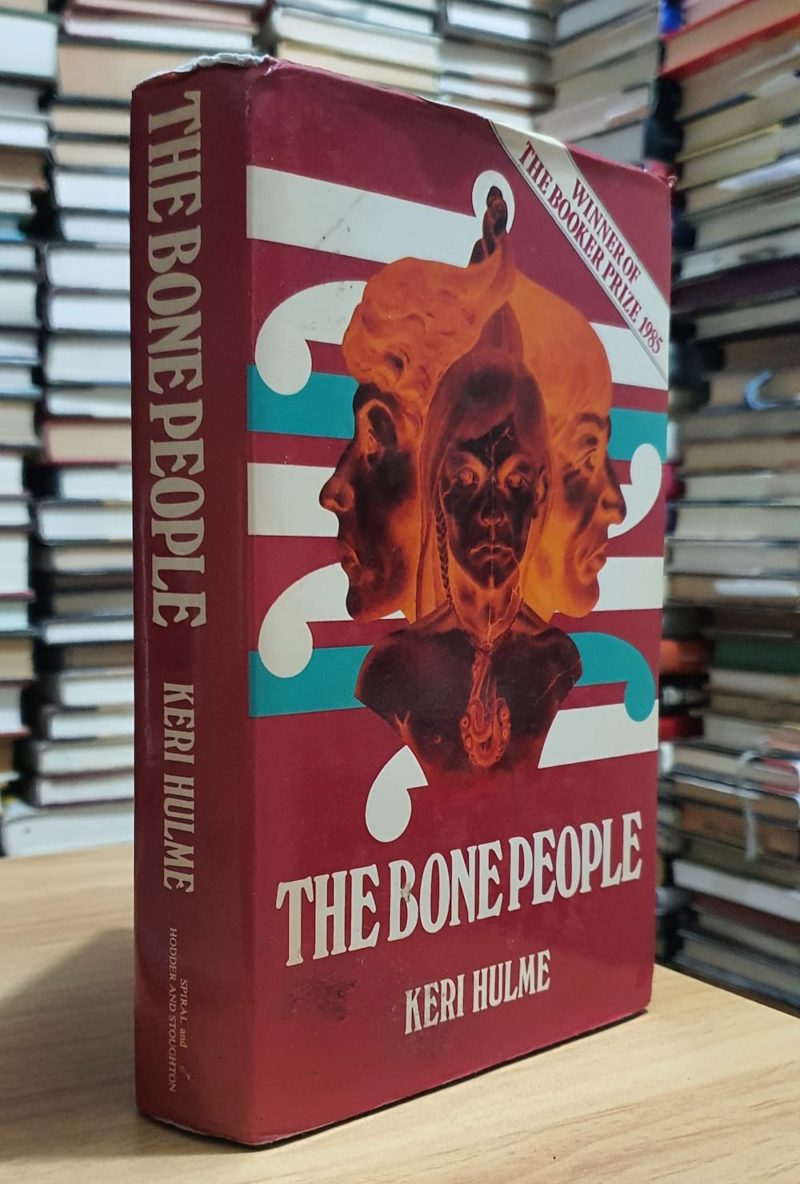Ernest Cline’s debut novel, Ready Player One (2011), blends speculative fiction with a thoughtful examination of nostalgia and its effects on identity and memory. Anchored in a world rich with 1980s pop culture references, the book analyzes how shared cultural touchstones shape both individuals and communities. Through the lens of technology’s role in redefining human relationships, the book provides a nuanced exploration of modern life and its challenges.
The book portrays a world ruled by a vast virtual reality (VR) system and explores how digital environments redefine the scope of interaction and identity. As depicted in the book, these spaces provide freedom and creativity but also bring significant challenges to individuality and connection. Through its integration of video games, films, and music from a past era, it bridges generational divides and encourages reflection on the role of shared media experiences in shaping collective understanding.
Beyond its nostalgic framework, the book addresses themes with significant relevance in the digital age. It explores the conflict between technological progress and ethical accountability, raising critical questions about the sacrifices tied to immersion in virtual environments. Through its focus on identity and community, the narrative reveals the difficulties of preserving genuine connections in a world shaped by mediated interactions.
Ready Player One Book Overview
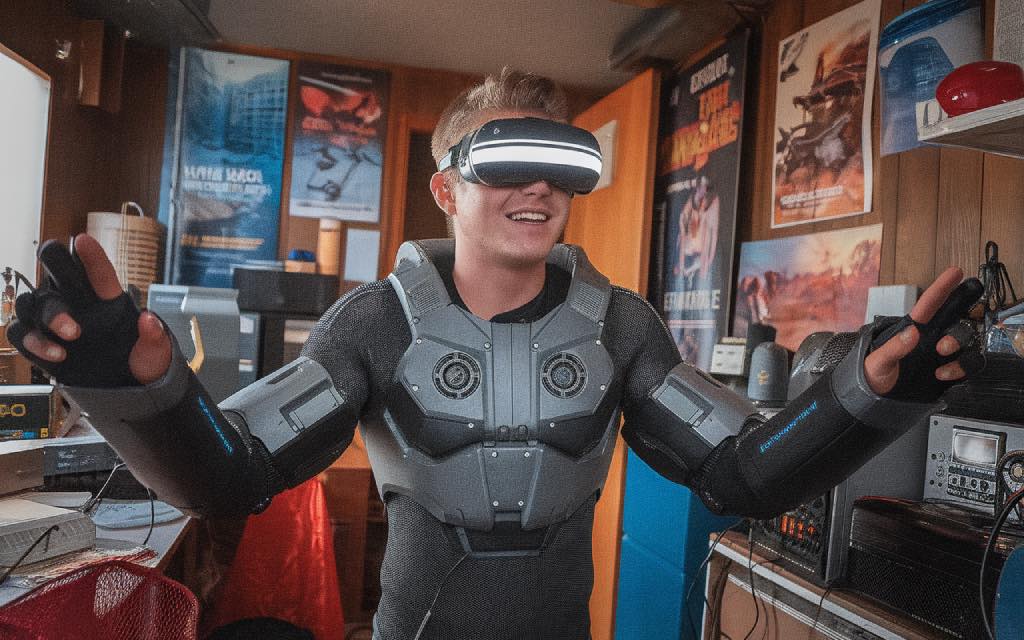
Set in a dystopian near-future, Ready Player One presents Wade Watts, a resourceful teenager navigating life in a society ravaged by economic collapse and environmental degradation. His solace lies in the OASIS, a sprawling virtual universe where people escape their grim realities. Wade’s journey begins when he joins a high-stakes competition to solve puzzles left by James Halliday, the late creator of the OASIS. Success promises unimaginable wealth and control over the virtual realm, making Wade’s quest both perilous and thrilling.
The book is saturated with references to 80s media, which are embedded directly into the structure of its plot. Video games, films, and music become more than nostalgic callbacks—they serve as essential elements of the challenges Wade encounters. As the competition intensifies, the story delivers a fast-paced narrative filled with suspense, unexpected twists, and moments of levity. Cline’s detailed world-building transforms the OASIS into an intricate virtual landscape that feels both fantastical and eerily plausible.
Key Themes in the Novel
Virtual Reality and Escapism
Ready Player One examines the conflict between dependence on technology and the physical world. The OASIS functions as a refuge for those facing social inequity. It offers the freedom to build identities, explore limitless opportunities, and seek comfort in a shared virtual space. Yet, this refuge often turns into a trap, erasing the line between temporary escape and complete withdrawal from reality. The novel challenges the reader to grapple with the paradox of technology: its ability to bring people closer while deepening divides.
Identity and Representation
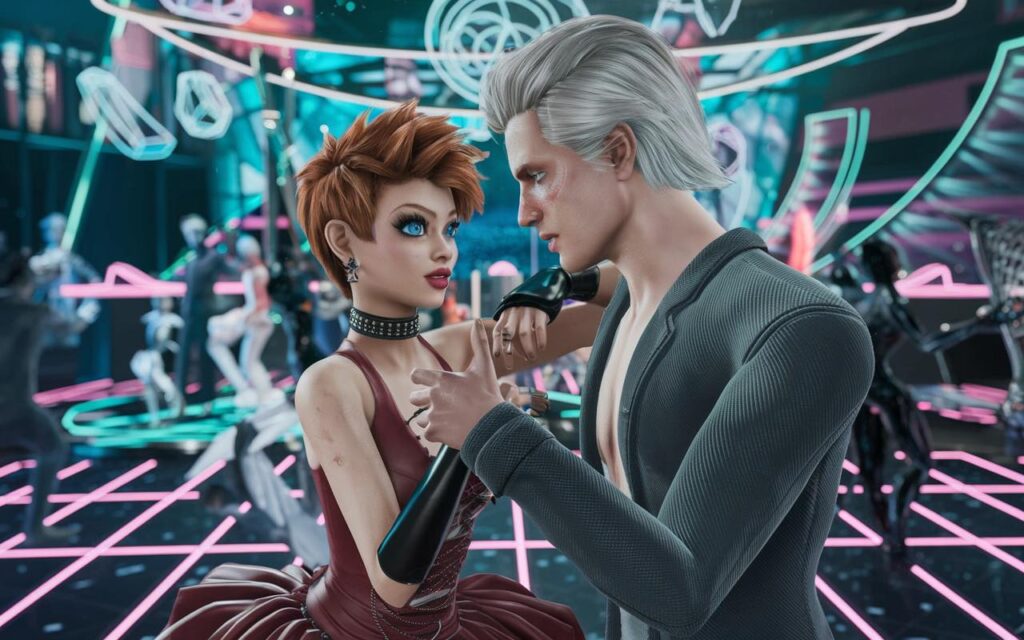
The narrative also explores how individuals navigate identity in virtual spaces. Characters adopt avatars that reflect their aspirations, insecurities, or fantasies, which reveals how VR environments allow for self-expression while concealing deeper truths. Wade’s evolution encapsulates the tension between authenticity and performance, particularly as he balances his virtual persona with his real-life vulnerabilities.
Nostalgia and Cultural Memory
Cline uses 80s culture as a central narrative device to show how nostalgia influences identity and relationships. For Wade, Halliday’s riddles and challenges act as a path through shared cultural memory. They give a sense of belonging to those who recognize the references. This portrayal of nostalgia reflects both its strengths and its dangers. The novel shows how it can create comfort and connection, but also how it can hold people back from engaging with the present.
Friendship and Collaboration
Achieving success in the OASIS depends not on solitary skill alone but on collaboration, trust, and a shared commitment to common objectives. Initially, Wade embarks on his quest alone, but the narrative reveals the essential role of forming alliances. By emphasizing the strength found in teamwork, the novel reflects on the broader significance of connection and cooperation in pursuit of meaningful goals.
Ernest Cline’s Background and Style
Cline’s writing draws heavily from his formative years in the 1980s. Born in 1972, he grew up surrounded by the decade’s technological and cultural milestones, which deeply inform his literary sensibilities. His passion for retro video games, films, and music permeates Ready Player One, creating a narrative rich in intertextual references.
Stylistically, Cline uses straightforward prose alongside fast-paced scenes. This approach keeps the story accessible and sustains its momentum. His use of pop culture as both a backdrop and a narrative device has garnered praise for its ingenuity, though some critics view it as overly indulgent. Regardless, Cline’s approach reflects a genuine admiration for the cultural artifacts of his youth that gives his work a distinctive voice.
Cultural Impact and Critique
Since its publication in 2011, Ready Player One has received both praise and criticism while also sparking ongoing debate about its cultural impact. The novel found a strong connection with readers, especially those who appreciated its detailed incorporation of the 80s cultural elements. For those who experienced the era firsthand, the book evoked a powerful sense of recognition and nostalgia, while for younger audiences, it offered a vivid introduction to the iconic media and trends of the decade.
However, critics have questioned the novel’s extensive reliance on pop culture references. While some view them as enriching, others argue they overshadow character development and thematic exploration. Whether praised for its celebration of 1980s media or critiqued for leaning heavily on cultural references, the novel stands as a landmark in contemporary science fiction—it remains to provoke thoughtful reflection on the shifting dynamics between virtual and physical realities.
The novel’s success paved the way for a film adaptation directed by Steven Spielberg, further cementing its place in popular culture.
Film Adaptation
The 2018 film adaptation of Ready Player One by Spielberg sought to translate Cline’s intricate virtual universe into a visually immersive spectacle. Spielberg, whose body of work played a defining role in shaping the cultural identity of the 1980s, brought a unique sensibility to the adaptation. Leveraging his personal connection to the era, he balanced the novel’s nostalgic elements with a modern cinematic approach designed to resonate with contemporary audiences.
The film streamlined the novel’s narrative, reworking key plot points and condensing the complexity of Cline’s vision to suit the medium’s constraints. Spielberg replaced some of the book’s challenges and references, opting for broader cultural touchpoints that extended beyond the 80s. For example, instead of the book’s deeply specific puzzles steeped in niche gaming lore, the film introduced visually arresting set pieces, such as a thrilling sequence inspired by Stanley Kubrick’s The Shining. This shift allowed the film to appeal to a wider demographic but also diluted the specificity that many readers cherished in the original text.
Critical reception of the film was mixed, reflecting the challenges of adapting such a reference-heavy novel. Praise was directed toward its dazzling visual effects and Spielberg’s ability to capture the kinetic energy of the OASIS. However, critics also highlighted shortcomings, such as a lack of depth in character development and the simplification of the novel’s themes. Some argued that the adaptation leaned too heavily on spectacle, sidelining the ethical and philosophical questions central to the book.
Ready Player Two
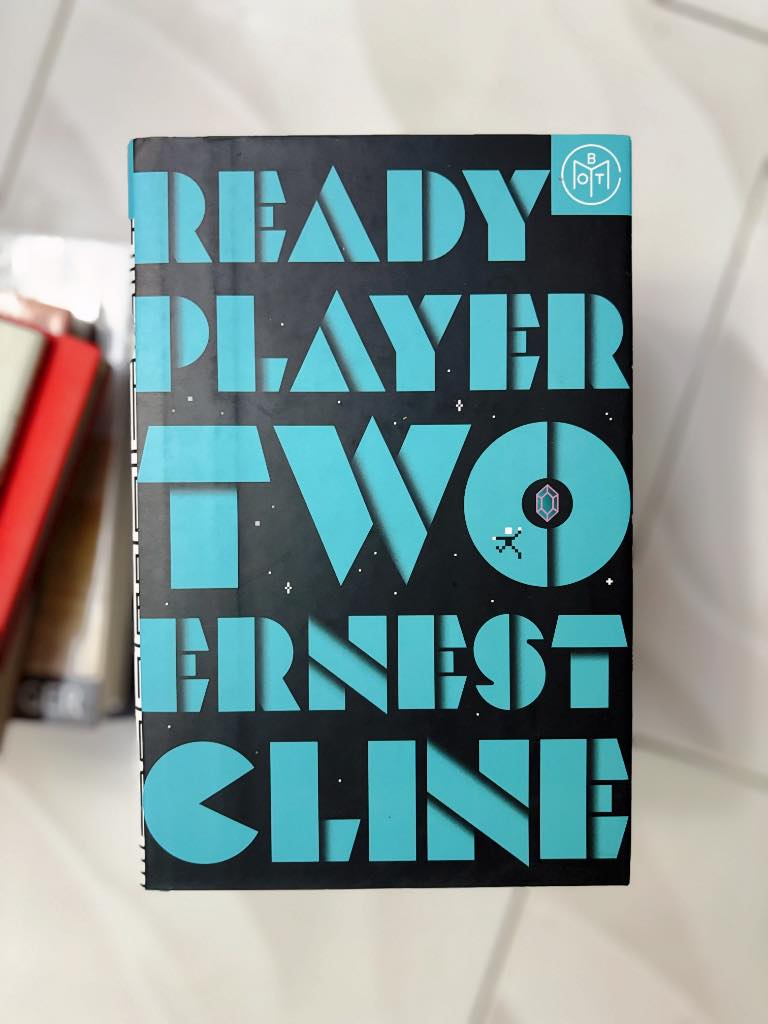
The book’s sequel, Ready Player Two (2020), expands on the universe established in the first book while introducing new challenges and ethical dilemmas. The story picks up shortly after Wade wins control of the OASIS and uncovers a groundbreaking piece of technology left behind by Halliday. This new innovation, known as the ONI (OASIS Neural Interface), enables full sensory immersion into the virtual world, merging simulation and reality in ways never before imagined.
While the ONI promises unparalleled experiences and opportunities, it also introduces new risks, including the potential for exploitation, addiction, and further detachment from the physical world. Its introduction raises complex dilemmas—questions of consent, the potential for misuse, and the psychological toll of substituting virtual experiences for tangible human connections.
Critics of Ready Player Two have noted that its expanded narrative often falls short of balancing its ambitious scope with character development, a concern that also appeared in discussions of the first book. However, the sequel provides an opportunity to revisit beloved characters while introducing fresh conflicts that challenge their relationships and values. The story also grapples with Halliday’s legacy in more complex ways, addressing the darker aspects of his character and the consequences of his technological vision.
Selected Passage with Analysis
Standing there, under the bleak fluorescents of my tiny one-room apartment, there was no escaping the truth. In real life, I was nothing but an antisocial hermit. A recluse. A pale-skinned pop culture-obsessed geek. An agoraphobic shut-in, with no real friends, family, or genuine human contact. I was just another sad, lost, lonely soul, wasting his life on a glorified videogame.
Page 198, Ready Player One by Ernest Cline
This passage vividly encapsulates the protagonist's stark self-awareness and his struggle with identity. Wade's description of himself as a "hermit" and "shut-in" reflects a life dominated by isolation, both socially and physically. His candid self-critique lays bare his reliance on the OASIS to escape a reality he perceives as unlivable. This self-perception forms a critical foundation for his journey, signaling a need for transformation and a deeper reckoning with what constitutes a meaningful existence.
Thematically, the passage reflects the novel’s focus on escapism and the paradox inherent in virtual reality. The OASIS serves as a sanctuary for Wade, offering relief from a dystopian world while also deepening his isolation. The duality of technology — as both a liberator and a confining force — is central to the narrative, which raises questions about the cost of prioritizing virtual lives over real-world connections.
By juxtaposing Wade’s grim real-life circumstances with his immersive escapades in the OASIS, the passage highlights the novel's recurring contrast between real life and the virtual world. This scene also sets the stage for Wade's character arc, as his growing realization of the limitations of virtual existence propels him toward embracing human connection and confronting the harsh realities he once avoided.
Further Reading
Ready Player One: Ernest Cline on how his gamer fantasy became a Spielberg film by Keith Stuart, The Guardian
‘Ready Player One’: 16 Key Differences Between the Bestselling Book and Steven Spielberg’s New Movie by Kate Erbland, IndieWire
The Ready Player One backlash, explained by Constance Grady, Vox
Is Ready Player One worth it for someone who’s missed the 80s? on Reddit
